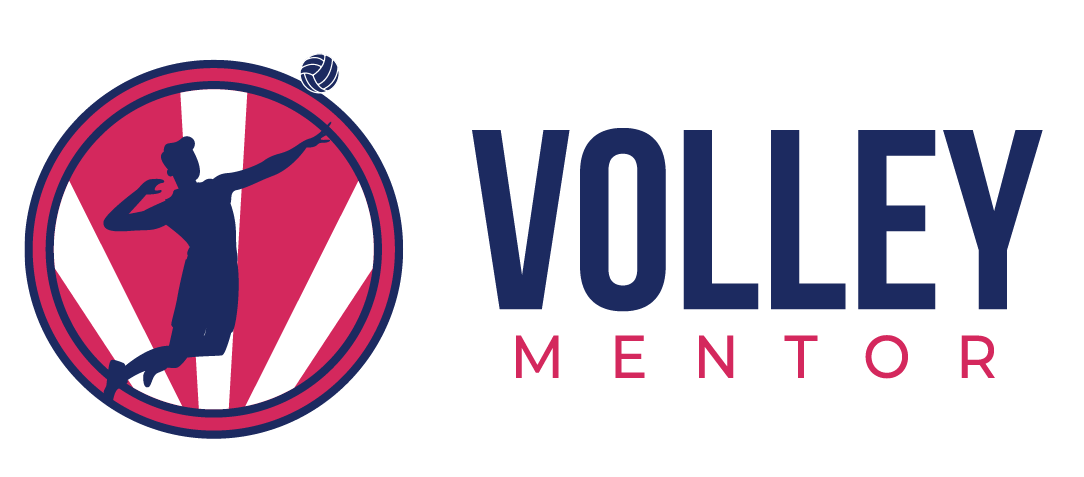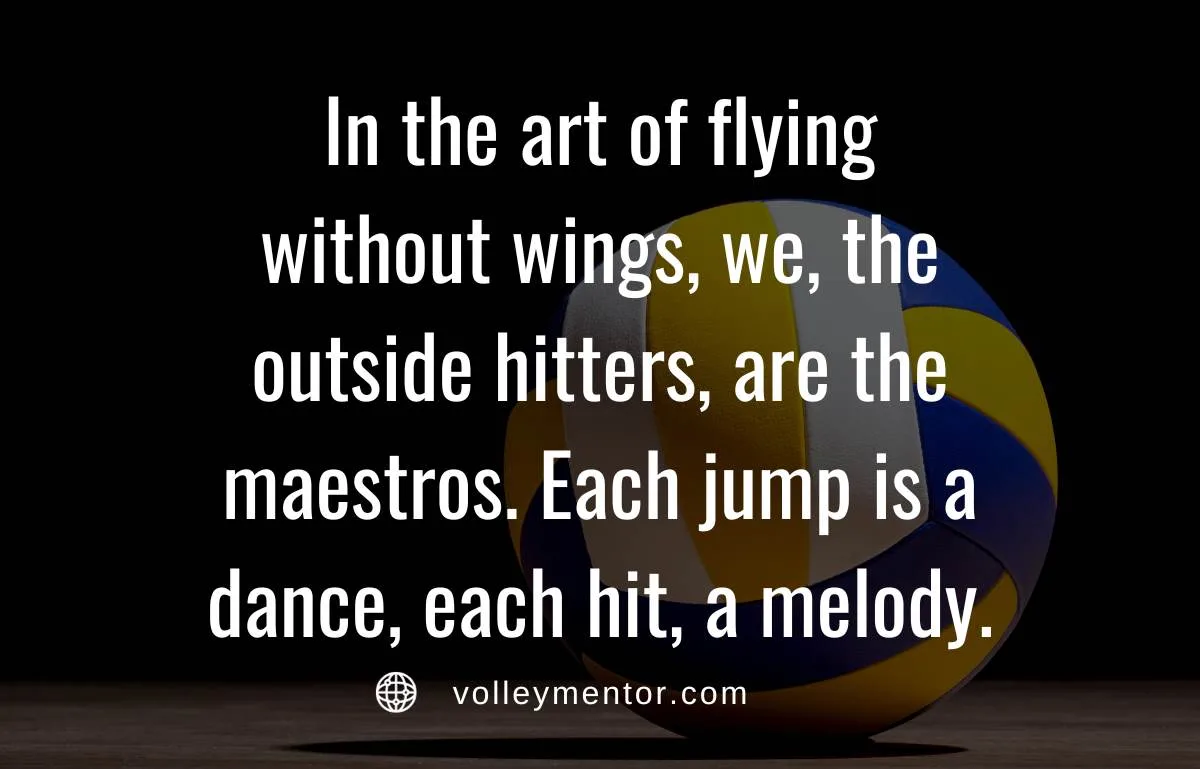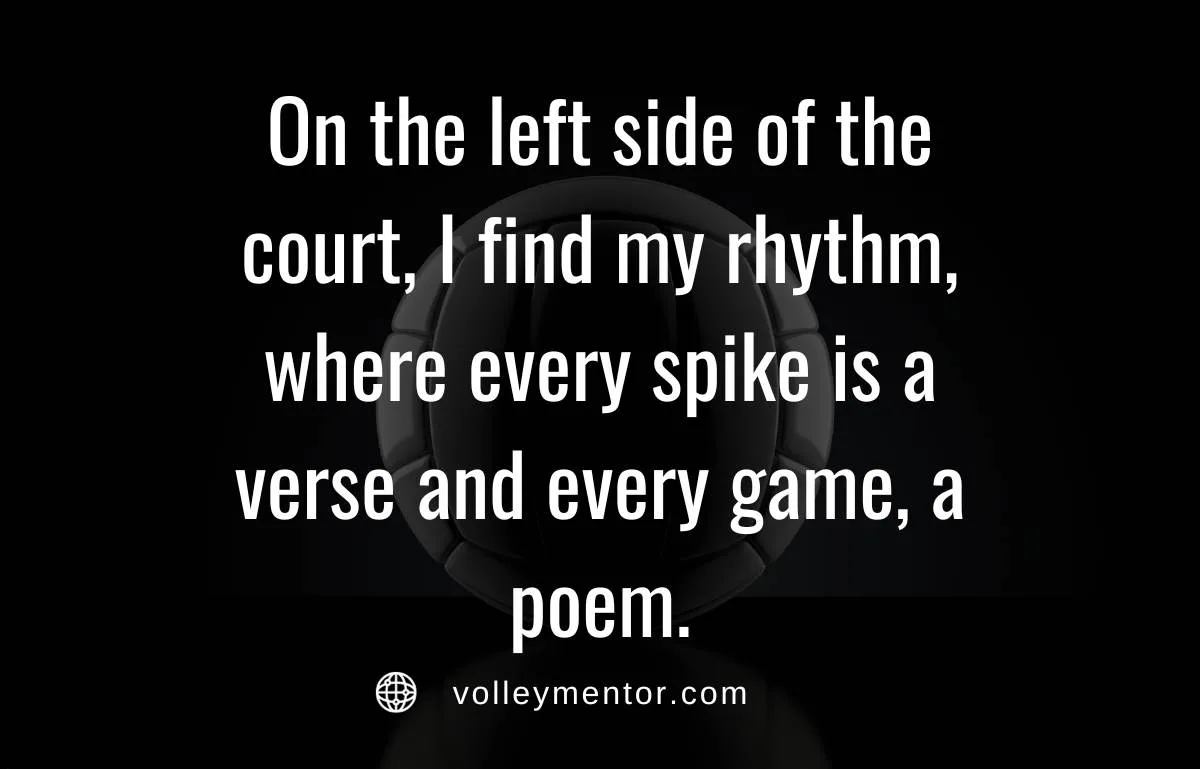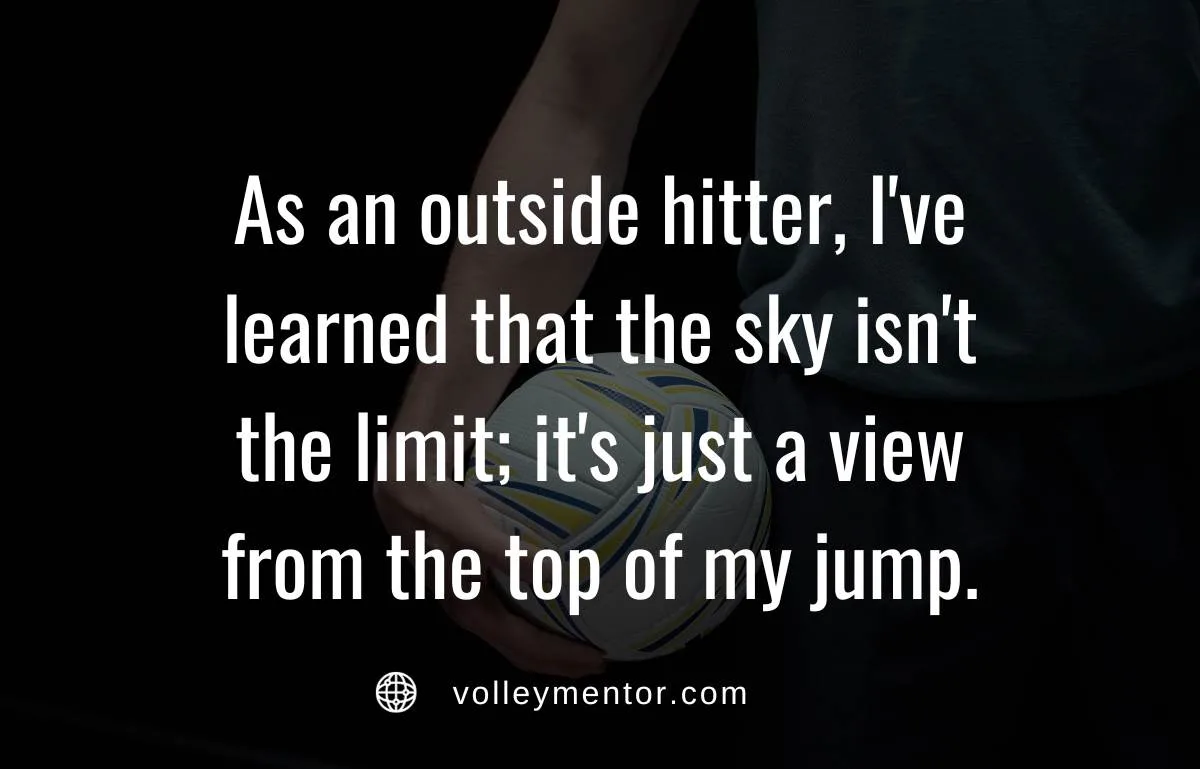Mastering the Outside Hitter Volleyball Position: A Complete Guide
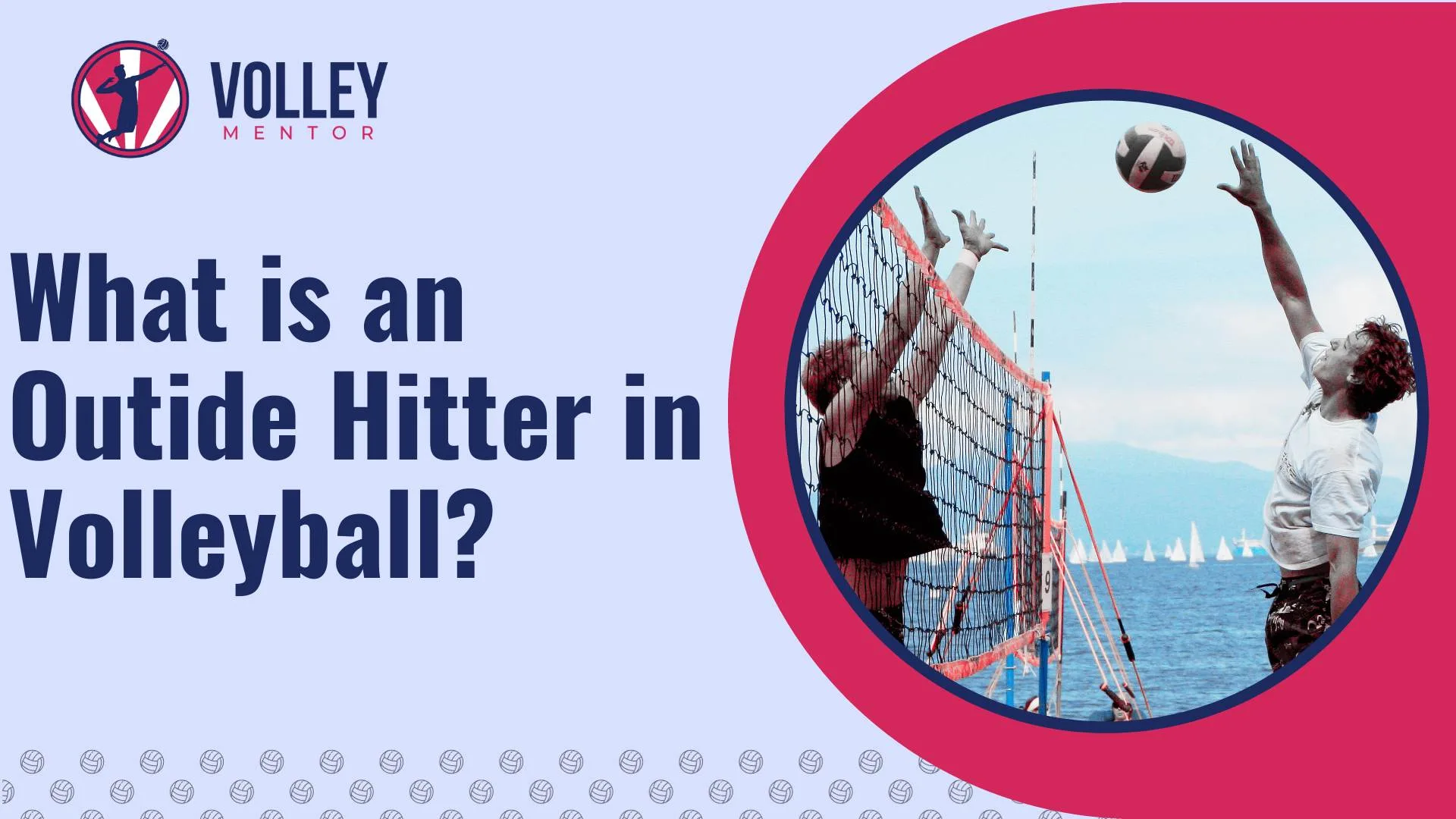
I remember attending a local volleyball match a few years ago.
The score was tight, the crowd’s cheers filled the air, and with each rally, the excitement only grew.

In those nail-biting moments, one player stood out as the superstar: the outside hitter.
He was the prominent player jumping high and hitting the ball hard, trying to score points in those intense moments.
From that day, the outside hitter position captured my admiration more than any other player on the court.
But what exactly is the purpose of the outside hitter volleyball position?
Key Takeaway: The outside hitter in volleyball is a versatile player with outstanding spiking skills and is proficient in serve-reception and defense, including blocking and digging. They are the primary choice for setters, particularly in challenging plays, due to their ability to handle pressure.
In this article, I will talk about their essential role in attacking and defending, how they’re the ones the setter usually passes to in difficult times, and what skills they need to be good at their job.
It is a tribute to the players who frequently emerge as the game’s heroes.
Let’s learn more about this incredible player and his role on the court!
What is an Outside Hitter in Volleyball?
An outside hitter in volleyball is also known as the left-side hitter or, in some cases, “wing spiker.”
You can find him in position 4 on the court for the offensive plays and position 5 for defensive strategies.
This placement, especially on the left side near the net, enables a left-side hitter to adapt to various scenarios.
Their height is typically less than opposite hitters and middle blockers, but still, they manage to execute high vertical jumps and powerful spikes.
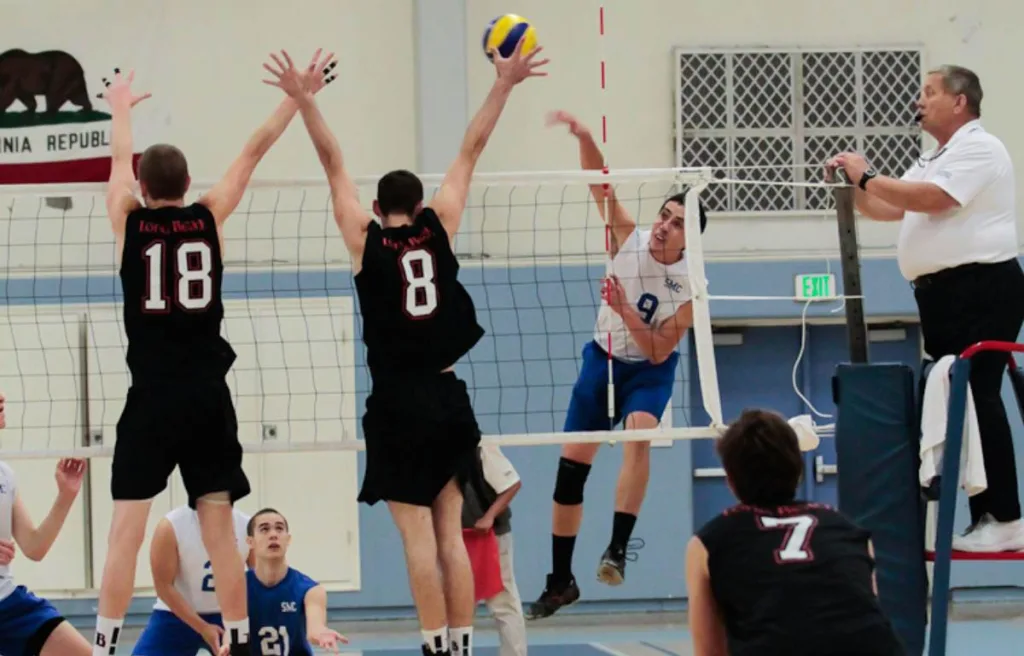
An essential aspect of this role is being the primary target for the setters.
When the play gets tough, or the ball isn’t in an ideal position, the person setting it (the setter) will often pass it to the outside hitter.
It is because the outside hitter is skilled at handling challenging situations and making a successful play out of them.
They are relied upon to take these difficult passes and try to score points.
What does the Outside Hitter do in Volleyball?
The outside hitter is critical in nearly every aspect of the lengthy volleyball game.
Their responsibilities are diverse and demanding, ranging from serving to spiking.
Let me break down their responsibilities into specific aspects:
1) Versatile Attacker
The primary role of an outside hitter is, of course, attacking.
I think no one should have any doubt on it, lolx 🙂
A good left-side hitter must be able to spike the ball with power and precision.
It requires excellent jumping ability, timing, and an understanding of the opponent’s defense.
Everyone in the team expects them to handle a variety of sets by adjusting their hitting technique.
If you are already playing in this position, adapt your hitting tactics based on the positioning of the opponent’s blockers.
Doing this will increase your chance of scoring maximum kills and make you the most dynamic player on the court.
2) Blocking: Teaming Up with the Middle Blocker
While outside hitters shine in their offensive capabilities at position 4, their defensive role is equally vital.
A significant part of their defensive responsibility involves blocking.
For this purpose, they typically partner up with the middle blocker.
Reading the opposite team’s setup and timing requires quick reflexes and strategic thinking.
They work together to form an effective barrier against opponents’ attacks and score maximum points for their team.
3) Serve Receive: The Foundation of Play
A critical but underrated aspect of the outside hitter’s responsibility is serve-receive.
The wing spiker is responsible for a controlled and accurate pass to the setter in the back row.
While they may not match the libero’s expertise in passing, their contributions in serve-receive are vital for maintaining the team’s flow.
It also helps to enable a seamless transition to offense.
This skill requires the outside hitter to handle powerful serves, quick decision-making, and accurate passes under pressure.

4) Serving: Initiating the Play
There’s a common misconception that outside hitters aren’t strong servers, but this couldn’t be further from the truth.
In reality, many of the best outside hitters can deliver powerful and strategic serves, often scoring aces.
Their serves can disrupt the opposing team’s formation and provide a significant advantage to their team.
It shows that they are not just offensive powerhouses but also strategic players who contribute significantly to all aspects of the game.
Another reason to love them. Right?
What Skills Does a Left-Side Hitter Need?
To become an exceptional left-side hitter, you need to have a particular skill set.
I have compiled a list of some of the skills and characteristics that outside hitters must have to excel on the court:
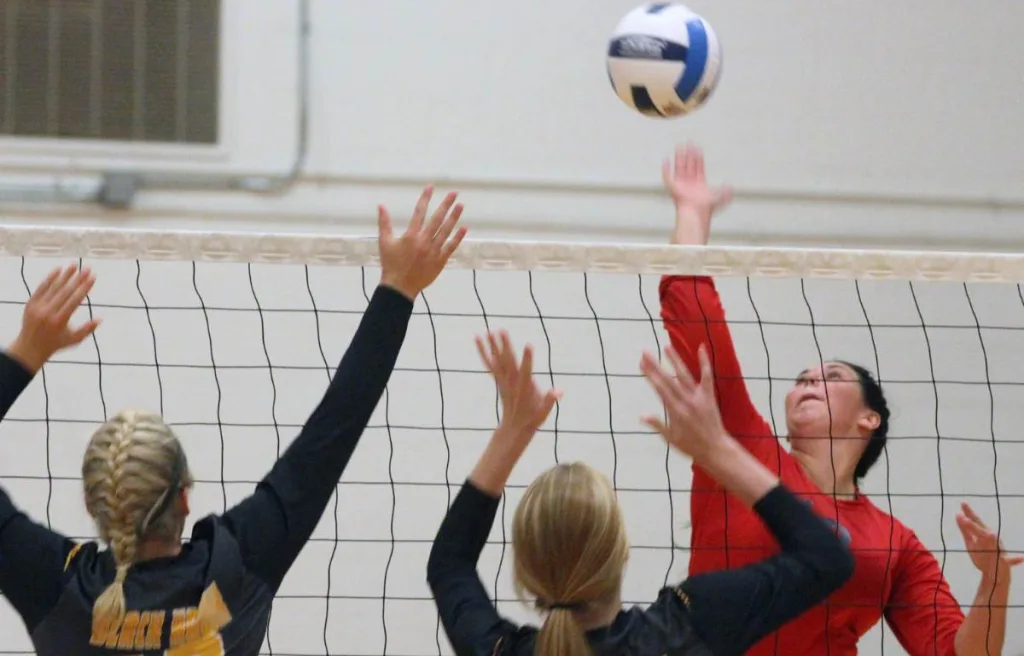
Perfecting the Outside Hitter Approach
To turn the opportunities into points, the opposite hitters must have a strong grip on their approach.
For those new to this concept, the approach is how a left-side hitter moves to jump and hit the ball.
It’s a fundamental aspect of their role, demanding precision, timing, and power.
Let’s break down the key components of a practical opposite-hitter approach.
1) Footwork: The Foundation of a Powerful Approach
The footwork in an outside hitter’s approach is the backbone of their spike.
It typically starts with a quick movement, such as a three-step sequence.
There are 2 main things involved in the footwork: timing and positioning.
If both things are up to the mark, it sets the foundation for the height and power of the jump.
Remember that the outside hitter gains momentum in the initial steps, while the last steps are more explosive and help them jump higher into the air.
2) Arm Swing Mechanics
The arm swing helps an outside hitter to generate the required power for the spike.
As he approaches the net, his arms swing back, then forcefully forward, and up during the jump.
The advantage of this approach is that it adds power to the spike and helps elevate the body.
The coordination of the arm swing with the jump is essential for timing the hit perfectly.
3) Body Positioning
I hope you have understood the importance of proper footwork and arm swing in the approach of an outside hitter.
Another crucial aspect of their approach is the proper body positioning, which ensures balance and power.
Their body should lean forward during the run-up and transition to an upright position during the jump.
This body positioning approach allows the left-side hitters to have a full range of motion in the arm swing and directs the energy upward and forward.
4) Jump Technique: The Key to Elevation
The jump is where all the elements of the approach come together.
A perfect leap requires bending the knees a lot in the last step and quickly straightening them to jump as high as possible.
It’s essential to jump at the right time with the ball that’s being set.
It’s harder to hit the ball well and score points if it is too early or too late.
Physical and Mental Traits of Left-side Hitter
Outside hitters in volleyball have a unique combination of physical and mental attributes, making their position unique on the court.
Let’s discuss the physical traits of the left-side hitters first:
Everyone discusses the physical attributes of volleyball players in a team.
But do you know that mental attributes and decision-making are equally crucial for an athlete?
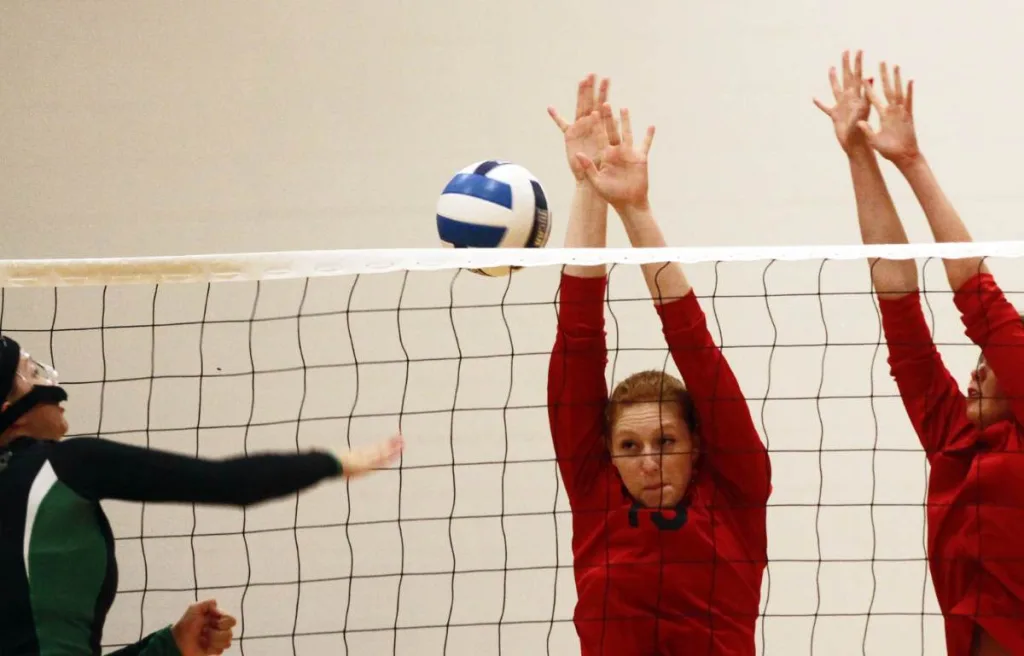
Now, let me discuss some of the mental attributes of outside hitters to clarify my statement:
How to be a Better Outside Hitter?
Do you want to become an exceptional outside hitter and get noticed by coaches and recruiters?
If that’s your dream, you must develop some attributes and develop a keen sense of the game.
I have listed some of the tailored strategies that will surely help to become more effective as a left-side hitter:
- Develop a strong connection with your setter to understand their play style and preferences.
- A pro tip is to adopt a wide approach angle, allowing you to adjust quickly and hit various sets effectively.
- I can’t emphasize enough on it! Focus on increasing your jump height and developing a faster arm swing.
- Ensure to have a ‘go big’ mentality, aiming to score points and make impactful plays.
- Be ready to adjust your strategy based on the game’s flow and your opponents’ tactics.
- Be open to constructive criticism from experienced players and coaches. Use the feedback to refine your skills and understanding of the game.
- Learn to play effectively near the antenna and attack the line, challenging the opposing blockers.
- Don’t compromise on your footwear. Always wear customized hitter volleyball shoes for optimal performance.
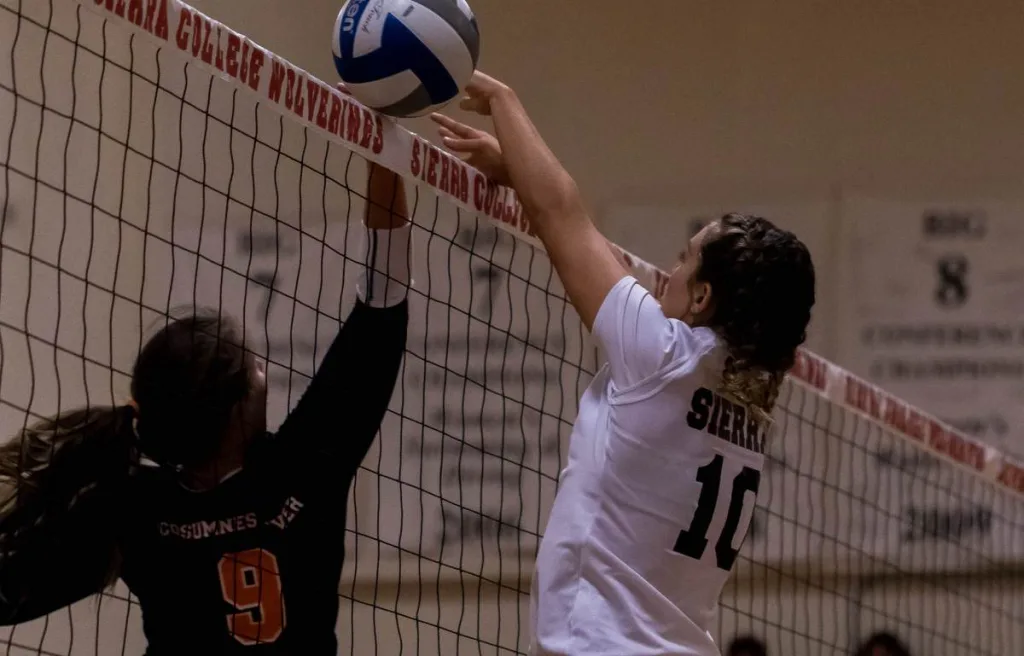
Outside Hitter Volleyball Drills
Specific drills can significantly benefit outside hitters looking to enhance their skills.
Although you can try the same drills as opposite hitters, tailored drills for left-side hitters could be more effective.
You may find hundreds of drills on the internet and YouTube, but I have compiled the best 3 of them.
Let’s discuss the steps of each drill in detail:
1) Serve-Receive to Attack Transition
This drill helps you enhance your critical serve-receive skill as an outside hitter.
Also, it helps to transition into an attacking mode quickly.
The steps of the ‘serve-receive to attack transition’ drill are:
- Ask a partner to serve on the opposite side of the court.
- As a right-side hitter, you will start in the serve-receive position.
- The server will do the service and try your best to receive it perfectly.
- If the step fails, repeat it until you can successfully receive it.
- Once the serve-receive step is successful, quickly transition to an attacking position.
- Now, a setter sets the ball for you to attack or spike.
- Focus on smooth transitions from defense to offense.
- Repeat this drill at least 5-7 times.
2) Endurance Hitting Drill
Ah, this drill is my favorite.
It helps improve stamina and performance under pressure.
Also, through the ‘endurance hitting’ drill, you can visualize the intensity of an actual match during it.
The step-by-step procedure is:
- Position a setter at the net with a supply of volleyballs.
- You, as a left-side hitter, start at the attack line.
- The setter delivers a series of sets for you to attack.
- You must continuously attack each set and return to the attack line after each hit.
- Ensure you maintain a fast pace to simulate game conditions and build endurance.
- Continue the drill for a set duration or number of hits.
- Your focus throughout this drill should be on maintaining power and form.
3) Vertical Leap Challenge
The “vertical leap challenge” drill is about improving the jumping ability and explosive power.
As an outside hitter, it is essential for effective blocking and spiking in volleyball.
The steps are straightforward and listed below:
- The first step is to position yourself under the volleyball net.
- Jump and touch as high on the net as possible, aiming to resemble a spike or a block.
- Land swiftly and immediately prepare for the next leap.
- Do at least 10 consecutive jumps and focus on achieving maximum height with each jump.
- Reduce the time spent on the ground between jumps to increase agility.
- Regularly practice this drill to enhance your vertical leap, as it improves your hitting and blocking to a greater extent.
Motivational Insights: Outside Hitter Volleyball Quotes
Being an outside hitter is about passion, facing challenges, and striving to improve.
If it was easy, everyone on the court was in your position.
Here, I have gathered some motivational quotes to encourage and inspire you in every jump, block, and game moment.
Also, if you like them, don’t forget to share them on your social media profiles 🙂
Final Words
Thank you for reading this article till the end.
In conclusion, mastering the outside hitter volleyball position combines skill, strategy, and the right mindset.
You need to understand the roles of your position completely to adapt to different game situations.
Remember that being a left-side hitter requires constant learning and improvement.
Every spike, block, and serve is a step towards becoming a better player.
Keep practicing, stay focused, and embrace the unique challenges of this exciting position!
